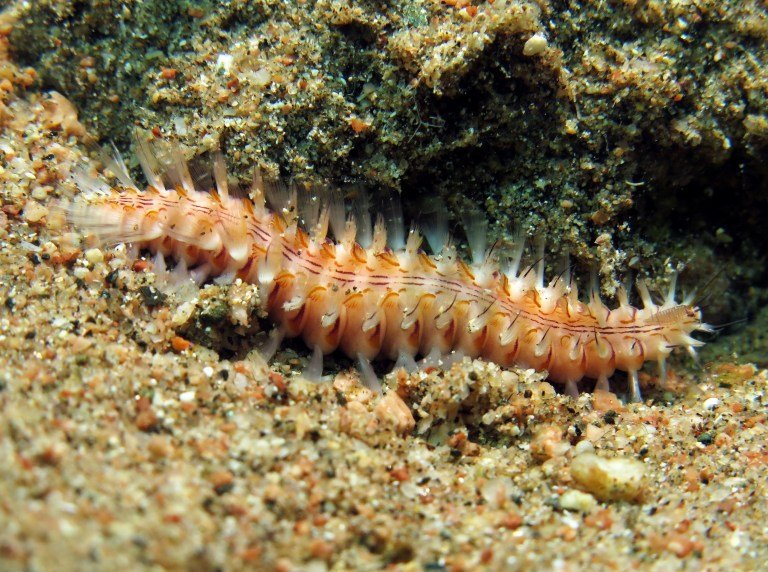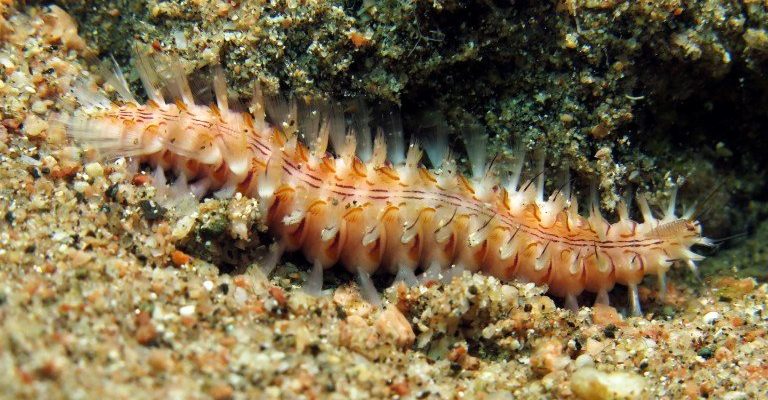
Bristle worms, with their long, segmented bodies and bristles sticking out, are part of the natural cleanup crew in reef tanks. They munch on detritus and decaying matter, helping keep the environment in check. But when your coral starts looking unhappy—perhaps the colors are fading or the polyps aren’t extending—you might start pointing fingers at these little guys. Today, we’ll explore whether bristle worms are indeed causing coral irritation or if they’re just caught in the crossfire of a much bigger issue.
What Are Bristle Worms?
Bristle worms belong to the class Polychaeta, which means “many bristles.” They are segmented worms found in various marine environments, from sandy bottoms to live rock in reef tanks. You might encounter species like the *Eunice aphroditois*, which can grow quite large, or smaller, more delicate types that are equally common.
These worms are a natural part of the ecosystem, playing a crucial role in breaking down organic matter. So, when you see them in your tank, you might just have a little environmental hero on your hands. They feed on detritus, leftover food, and decaying plant matter. This can be beneficial in keeping the overall tank healthier. Picture them as miniature recyclers, helping to transform waste into nutrients.
However, their appearance can sometimes be alarming. If you see them in large numbers, it might raise some eyebrows. Are they taking over? Are they harmful to your corals? These are common questions that many reef enthusiasts grapple with when they spot bristle worms in their aquariums.
Coral Irritation: Signs and Symptoms
Now, let’s talk about coral irritation. This isn’t just a fancy term; it involves real, observable changes in your corals’ health. Signs of irritation can include closed polyps, loss of color, or even signs of tissue recession. If you notice these symptoms, you might feel a wave of panic. After all, corals are sensitive creatures, and keeping them healthy is paramount.
So, what could be causing this irritation? Besides bristle worms, several other factors can play a role. Poor water quality, incorrect lighting, or even pests like aiptasia or flatworms can exacerbate the situation. Each of these can stress your corals in different ways, making it essential to look at the bigger picture. Think of it like a puzzle—each piece matters in the grand design of your aquarium.
If your corals are showing signs of irritation, it’s critical to address the issue promptly. Ignoring it could lead to a decline in health or even death over time. You might find yourself checking water parameters, looking closely at the tank’s inhabitants, and adopting a detective’s mindset.
Are Bristle Worms the Culprits?
Here’s the million-dollar question: Are bristle worms genuinely responsible for coral irritation? The short answer is: not usually. While bristle worms can sometimes eat coral tissue, it’s typically when they’re underfed or when other food sources are scarce. They generally prefer decaying matter, which means they’re more likely to be the symptom rather than the cause of your woes.
Research indicates that the mere presence of bristle worms isn’t a direct threat to healthy corals. When coral irritation occurs, it’s often due to a combination of factors related to the tank’s overall health, not just these little guys. So, before you go on a bristle worm hunt, it’s essential to assess all aspects of your reef environment.
However, that said, if you notice a sudden explosion of bristle worms coinciding with a decline in coral health, it’s worth investigating. Sometimes, an overabundance can be a sign of nutrient imbalances in your tank, which can lead to more significant issues down the line. So, keeping a healthy population of bristle worms is key for maintaining balance in your ecosystem.
Environmental Factors Impacting Coral Health
Let’s take a closer look at the factors that can affect coral health beyond bristle worms. Potential issues often arise from water quality, including parameters like salinity, pH, nitrates, and phosphates.
- Water Quality: High levels of nitrates or phosphates can lead to algae blooms, choking out your corals and reducing light availability.
- Lighting Conditions: Corals have specific light requirements, and if those are not met, they can become stressed and weak.
- Temperature Changes: Sudden shifts in temperature can shock corals, causing them to close up.
Maintaining consistent conditions in your aquarium is essential. Think of it like nurturing a garden—each element needs to be in sync for the plants (or corals) to thrive. Regular water tests, mindful feeding, and consistent tank maintenance can help create a balanced ecosystem where both corals and bristle worms can coexist without issue.
Best Practices for Managing Bristle Worms
If you find yourself with an ever-growing population of bristle worms, here are some strategies to manage them:
1. **Feeding Practices:** By avoiding overfeeding your fish, you can reduce the surplus of uneaten food that encourages bristle worm growth.
2. **Regular Maintenance:** Performing regular water changes and keeping your tank clean can help maintain a balance in the ecosystem.
3. **Natural Predators:** Some fish species, like certain wrasses, enjoy munching on bristle worms. Adding these fish can help keep the population in check without drastically altering other parts of your tank.
By keeping your tank clean and balanced, you create a healthier environment for all its inhabitants, including those misunderstood bristle worms. Remember, the goal is harmony—one where every creature plays its part without causing irritation to the corals.
At the end of the day, understanding the relationship between bristle worms and coral irritation is all about perspective. While these worms can sometimes be linked to coral health issues, they are rarely the sole culprits. Instead, they are part of a complex ecosystem that requires balance and care.
So, if you’re noticing signs of coral irritation, take a step back and look at your entire tank. Assess water quality, light, and nutrient levels before jumping to conclusions, and don’t forget to appreciate the role of bristle worms as part of that underwater ecosystem. With a little detective work and some attention to detail, you can create a thriving environment where both corals and their bristle worm neighbors can flourish together.

